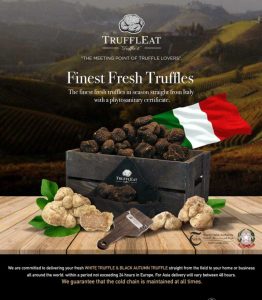We need to talk about butter. Specifically, this massive chunk of hand-rolled deliciousness that I picked up from a small-town dairy. It was only in the past few years—when I went through a French cooking phase—that I rediscovered the wonders of this classic cow-based fat. And when I ran across a two-pound chunk of “Hand-Rolled” butter, the idea felt new and exciting.
But what exactly is this stuff, and how is it different from the sticks you get from the grocery store?

The difference between hand-rolled and American supermarket butter
On the surface, butter-making is simple: You take a bunch of fresh cream and agitate the hell out of it until the fats separate from the liquid. The solidified chunks can then be pressed, rinsed, and even salted before it winds up in that ceramic dish on your table. As for the remaining liquid, it’s great for biscuits, mashed potatoes, or pancakes—it’s buttermilk. Bon Appetit has a video that captures the entire process, with explainers from start to finish.
G/O Media may get a commission
But dairy designations are tricky, and as with cheesemaking, the choice of milk makes a difference. There are also color variations and tastes that can change with the diet of the cows. But if we’re focusing on the “hand rolled” part, there’s another term that’s almost inextricably linked with the process.

“Hand-Rolled” and “Amish” butter can be pretty much the same thing
According to Taste of Home, the biggest difference between the various types of butter lies in their fat content: “American-style butter has at least 80% butterfat, and European style has at least 82%. Amish style butter has 84% to 85% butterfat.”
In general, you’ll see the terms “Amish” and “Hand-rolled” paired together. Despite the images it conjures up, not all Amish butter is churned in som old-fashioned way—it can be machine-made, like how Minerva Dairy uses electric churners to produce an incredible 20,000 pounds per day.
Most Amish/hand-rolled butter is pasteurized—or at least, this is common among larger makers like Pearl Valley Cheese. This held true for my particular (non-Amish, I guess) roll of butter, which the label describes as “made from pasteurized milk and lightly salted.”
In short, it comes down to this: Amish butter is (usually) rolled by hand and packaged in a large block and is (often) made with milk that’s been pasteurized. The uniting factor is the high fat content, at 84-85%.

Hand-rolled butter tastes amazing
My first test of this butter brick was a grilled-cheese bar for six people. I’d left a large chunk of the butter to soften on the counter, and it turned out to be the perfect pairing with each of the three available breads—farmer, wheat, and cheese loaves. Everyone came back for a second sandwich, which I’ll take as a compliment on the part of the butter. It browned beautifully, and not a single slice of bread scorched in the pan.

But a treat like this deserves to be tried on its own. A few days later, I spread a tablespoon or so of the hand-rolled log over some fresh bread. This is the comparison shown above, with the good stuff on the right. I expected it to be better, but not this much better. It was kind of like trying good honey for the first time, and tasting it against those nondescript, bear-shaped squeeze bottles. There was an added sweetness and simple kiss of salt, and the creaminess (again, both versions left to soften at room temp) was as smooth as slipping into a hot tub.
So, is it worth it to buy one of these huge butter bricks? Absolutely. Beyond the flavor upgrade, it makes simple economic sense. My local dairy store sells hand-rolled bundles for $4.95/pound, which is on par with the sticks you’ll find at the store. And even if you wind up paying a bit more, the richness is worth your coin. After a dozen grilled cheeses, pasta, six New York Strips, and a pan sauce, I still have about a pound of hand-rolled butter left. My only question left is whether I should see a cardiologist before or after finishing it.

